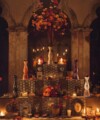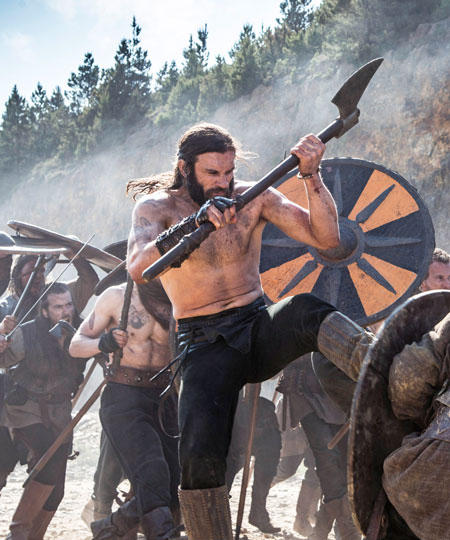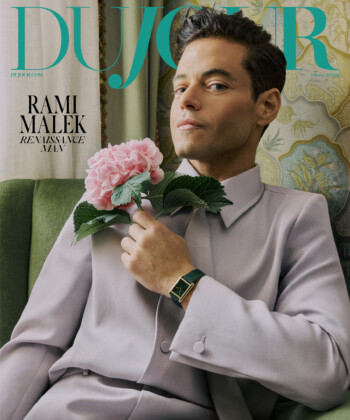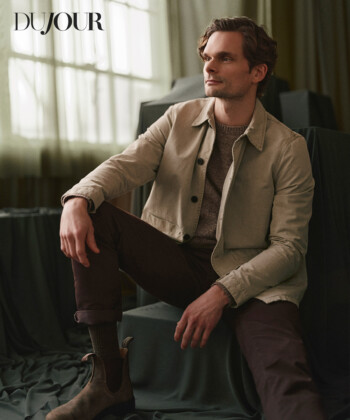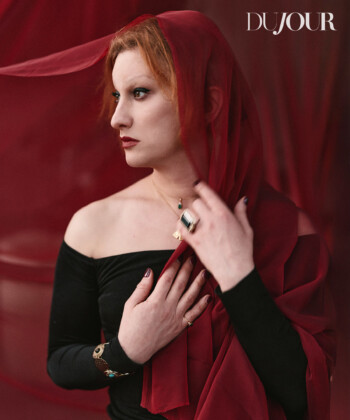
Katheryn Winnick as Lagertha and Fimmel; photo by Bernard Walsh
Ragnar’s wife Lagertha, played by Katheryn Winnick, is a personal favorite of mine. In this season, though, to be honest, I am alarmed by what’s happening to her in the first few episodes.
I talked to Katheryn for a long time and she said, “Lots of women are following me because I’m strong, but now I’ll seem too weak.” I said, “Wait and see. I’m putting you in in a situation that will make you even more strong.”
I’m also completely intrigued by Athelstan, the monk played by George Blagden whom the Vikings kidnap during a raid in England. Is he based on reality?
Yes, it’s recorded incident. Two monks were captured and taken over, probably as slaves, to Scandinavia. One of them came back and fought with the Vikings.
I can’t give it away here because it’s a spoiler, but something happens in Episode Four to Athelstan that is truly horrifying. Is that taken from history too?
It’s based on something that happened to a monk, yes. I feel better writing about it that I haven’t made it up. That’s the way I work. I don’t think I could write a totally original screenplay. In fact, I’m not interested in writing one. I like it to be rooted in reality.

Vikings creator Michael Hirst
In the first season, the episode “Sacrifice” delved into Viking religion, specifically animal and human sacrifice, in a profound way. I feel that a thread running through all of your work, starting with Elizabeth and continuing through The Tudors and now with Vikings, is religion.
That is part of my own journey, and you’re right, it’s very much rooted in the experience with Elizabeth: the Catholic and the Protestant. I am drawn to these subjects. There was an article on the Huffington Post that said Vikings is one of the few mainstream shows to take religious beliefs seriously. I was like, “Wow, you get that.”
The Tudors was criticized for too much bed-hopping, but in Season Three you tackled the little known but important Catholic rebellion, the Pilgrimage of Grace.
As far as I’m concerned, no critic has ever talked about Season Three of The Tudors in terms of the Pilgrimage of Grace and the Reformation. It was the first time a mass-market form of entertainment really addressed that. Even in my own country, it was ignored. I found that very hurtful.
With the character of the Princess Mary, who would one day become the queen cursed with the nickname “Bloody Mary,” what was it like to write her evolution?
It was fantastic. Because Sarah Bolger grew up in front of my eyes. She became this person that because of her experiences and her mother’s experiences, she represented Catholicism, just as Anne Boleyn, played by Natalie Dormer, represented Protestantism, both of them in a good way. Great actresses. They were talking about very deep things.
With Vikings, if you had to choose between writing a scene showing Ragnar and Lagertha talking and a scene showing Vikings’ fighting, which would you choose?
I like the scenes that are very domestic and about human things that I can imagine me and my wife talking about. There is a scene I wrote at the end of Episode Seven—everyone tried to stop me from writing it. It is the most extraordinary scene that I think you’ll ever see on television. I am very proud. If you can wait for the last scene of Episode Seven, you’ll see what I mean.
I don’t know if I can wait. Now this can be described as torture!
Vikings returns to the History Channel on Thursday, Feb. 27, at 10 p.m. ET.
Nancy Bilyeau is the executive editor of DuJour and the author of two historical novels set in England, The Crown and The Chalice.
MORE:
Black Sails’ Luke Arnold on Being John Silver
4 Must-Read Historical Fiction Page-Turners
Bonnie & Clyde’s Emile Hirsch on Life Outside the Law



















